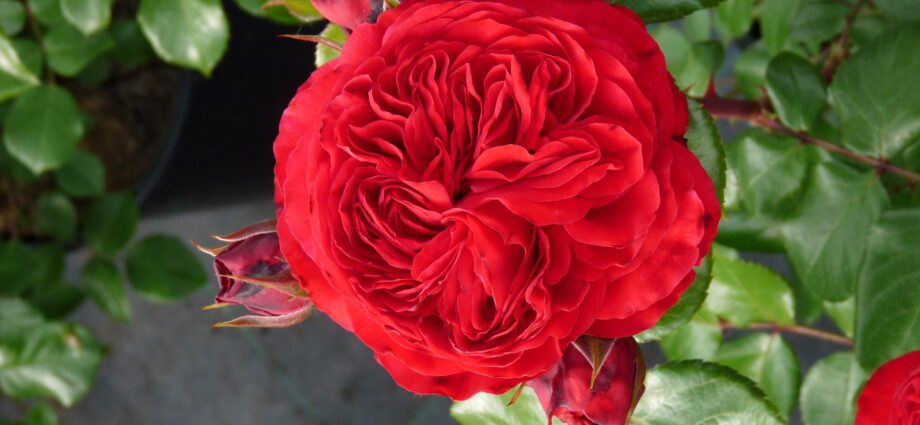Contents
Rose Red Leonardo: description and photo
Rose “Leonardo Da Vinci” retains its decorative effect for a long time, smells good and easily tolerates frost. Let’s find out what else is remarkable about this variety and how to care for it.
The history and description of the rose “Leonardo Da Vinci”
The variety belongs to the floribunda type, that is, to profusely flowering. It was bred in 1993 as a result of selection of hybrid tea and polyanthus roses. Hybrid bushes turned out with double flowers of a bright color.
Rose “Leonardo” is suitable for the design of paths, flower beds, borders
The bushes of this variety are erect, compact. Leaves are leathery, dense, dark green in color. The flowers are fragrant, their color is often pink, but also red. Inflorescences are collected in clusters, similar to a bouquet.
Bushes tend to form a large number of shoots. The top of each shoot is decorated with flowers. Roses of this type are planted in open areas, they are not afraid of the sun’s rays. Even under the bright sun, the petals do not fade, retain their color. The plant tolerates any weather conditions well, quickly adapts to a new place. In rainy regions, the buds retain their attractiveness and do not fall off. Roses rarely get sick.
In 2003, French breeders developed another floribunda variety. Rose “Red Leonardo Da Vinci” is distinguished by red double flowers, which are collected in rosette-like inflorescences. The flowers are large, resistant to climate change.
Features of planting roses “Leonardo Da Vinci”
Floribunda roses require special planting and care:
- the seedlings are buried 3-4 cm;
- pruning is carried out in spring and autumn;
- humus and mineral complexes are used as top dressing;
- bushes for the winter are covered with non-woven material.
The seedlings are deepened in order to obtain a profusely flowering bush. In early spring, the shoots are pruned, how radically it depends on how the roses survived the winter. In autumn, shoots are cut at a height of 35 cm from the soil level. Plants are fed alternately with organic matter and mineral complexes. They cover for the winter, despite the winter hardiness. Roses are not afraid of frosts, but sudden changes in temperature, icing of the shoots may occur.
Looking at the photo and reading the description of the Leonardo Da Vinci rose, it becomes clear why the plant has earned high praise from experts. It is an ornamental shrub with many flowers and requires minimal effort on the part of the gardener. Plant it in an area to admire the flowers throughout the season.










